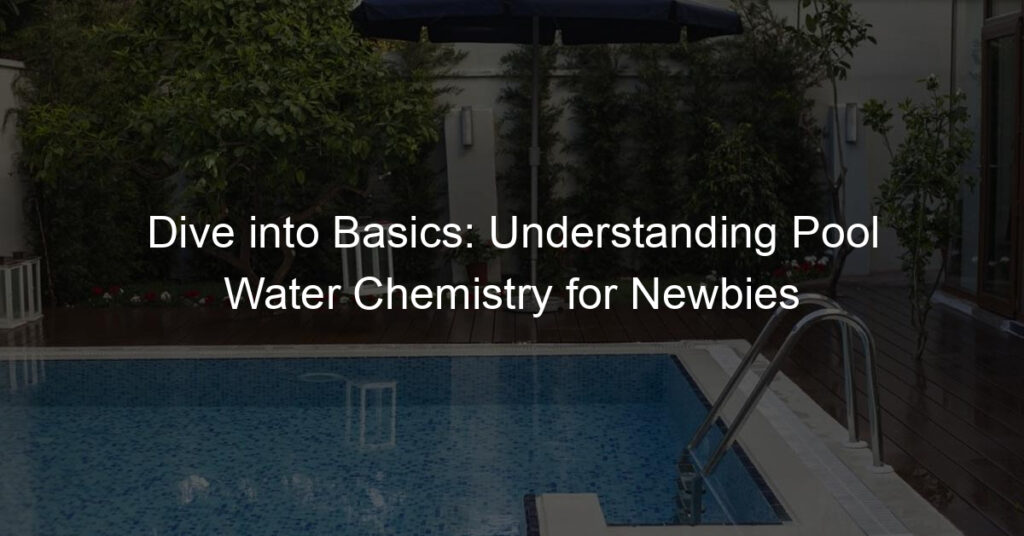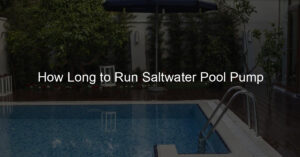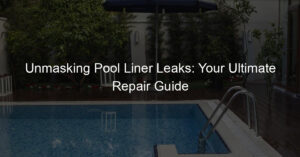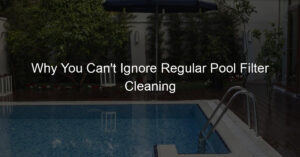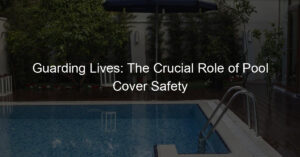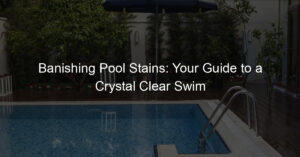Introduction to Pool Water Maintenance
Having a swimming pool is a great way to cool off during hot summer days. But, it’s not just about diving in and having fun. It’s also about keeping the water clean and safe. This is where pool water maintenance comes in. Let’s dive into the importance of pool water maintenance and the common issues faced without it.
-
- Understanding the Importance of Pool Water Maintenance
Pool water maintenance is crucial for several reasons. First, it helps keep the water clean and clear. Nobody wants to swim in cloudy or dirty water, right? Second, it ensures the water is safe. Without proper maintenance, harmful bacteria and algae can grow in the pool. This can lead to health problems like skin rashes and eye infections. Lastly, maintaining your pool water can save you money in the long run. It can prevent costly repairs due to damage caused by imbalanced water chemistry.
-
- Common Issues Faced Without Proper Pool Water Maintenance
Without proper pool water maintenance, several issues can arise. One common problem is cloudy water. This can be caused by imbalanced chemical levels, poor filtration, or lack of sanitation. Another issue is the growth of algae. Algae can make the pool water green and slimy, making it unpleasant to swim in. It can also clog your pool filters and damage your pool surfaces. Lastly, without regular maintenance, your pool equipment can get damaged. This includes your pool pump, heater, and filter system. These repairs can be expensive and time-consuming.
In the following sections, we’ll dive deeper into the basics of pool water chemistry, understanding pool chemical levels, and pool sanitation for beginners. By the end of this guide, you’ll have a good understanding of how to maintain your pool water and prevent common pool issues.
Basics of Pool Water Chemistry
Understanding the chemistry of your pool water is crucial for maintaining a clean and safe swimming environment. Let’s delve into the basics of pool water balance and why it’s so important.
Understanding Pool Water Balance
Pool water balance refers to the equilibrium of chemical components in your pool water. It’s a delicate balance that, when maintained, ensures the water is safe for swimming and doesn’t damage your pool equipment.
-
- Importance of Maintaining Pool Water Balance
Keeping your pool water balanced is vital for several reasons. First, balanced water is clear and inviting, enhancing your swimming experience. Second, it prevents the growth of harmful bacteria and algae, ensuring the water is safe for you and your family. Lastly, balanced water protects your pool equipment from corrosion and scaling, saving you costly repairs in the long run.
-
- Factors Affecting Pool Water Balance
Several factors can affect your pool water balance. These include:
-
- Chemical Levels: The levels of chlorine, pH, alkalinity, and calcium hardness in your pool water can significantly affect its balance.
- Weather Conditions: Rain, sunshine, and temperature can alter your pool water’s chemical balance.
- Pool Usage: The more people use your pool, the more body oils, sunscreen, and other substances enter the water, affecting its balance.
In conclusion, understanding and maintaining your pool water balance is a fundamental aspect of pool water chemistry. It ensures your pool remains a safe, enjoyable, and cost-effective leisure resource.
Pool Water Testing
Testing your pool water is a crucial part of maintaining a clean and safe swimming environment. It helps you monitor the chemical balance of your pool, ensuring it’s safe for you and your family to enjoy. Let’s dive into the importance of regular pool water testing and how to do it.
-
- Why Regular Pool Water Testing is Necessary
Regular pool water testing is essential for several reasons. Firstly, it helps maintain the right chemical balance in your pool. This balance is crucial to prevent the growth of harmful bacteria and algae, which can lead to skin irritations and other health issues. Secondly, regular testing can help you spot any potential problems early, saving you time and money in the long run. For example, if your pool’s pH level is too high or too low, it can damage your pool equipment and the pool’s interior surface. Regular testing allows you to adjust the chemical levels before they cause significant damage.
-
- How to Perform Pool Water Testing
Performing a pool water test is a simple process that you can do yourself. Here’s a step-by-step guide:
-
- First, you’ll need a pool water testing kit. These are readily available at pool supply stores or online.
- Collect a sample of your pool water. It’s best to take the sample from about 12-18 inches below the water’s surface, away from the return jets or skimmers.
- Follow the instructions on your testing kit. Typically, this involves adding a few drops of a reagent to your water sample and then comparing the color of the sample to a color chart provided with the kit.
- Based on the results, you can then adjust your pool’s chemical levels as needed. If you’re unsure about how to do this, it’s best to consult a pool professional.
Remember, regular pool water testing is a small task that can have a big impact on the health and longevity of your pool. So, make it a part of your routine pool maintenance schedule.
Understanding Pool Chemical Levels
Keeping your pool clean and safe involves understanding the levels of various chemicals. Let’s take a closer look at the types of pool chemicals and their roles.
Types of Pool Chemicals
There are several types of chemicals that are essential for maintaining a healthy and clean pool. Here are the most important ones:
-
- Chlorine
Chlorine is the most commonly used pool chemical. It acts as a sanitizer, killing bacteria and other harmful organisms. It’s available in different forms like tablets, liquid, and granules. It’s important to maintain the right level of chlorine in your pool to ensure it’s safe for swimming.
-
- Bromine
Bromine is another type of sanitizer, often used as an alternative to chlorine. It’s more stable at higher temperatures, making it a popular choice for hot tubs and spas. However, it’s less effective at killing certain types of algae.
-
- pH Increasers and Reducers
The pH level of your pool water affects how effectively your sanitizer works. If the pH is too high or too low, it can cause discomfort for swimmers and damage your pool equipment. pH increasers and reducers are used to adjust the pH level to the ideal range of 7.2 to 7.8.
-
- Algaecides
Algaecides are used to prevent and control the growth of algae in your pool. Algae can make your pool water look green and murky, and can also make the pool surfaces slippery. Regular use of an algaecide can help keep your pool crystal clear.
Understanding these pool chemicals and how to manage their levels is key to maintaining a clean, safe, and enjoyable pool. In the next section, we’ll discuss how to maintain optimal pool chemical levels.
How to Maintain Optimal Pool Chemical Levels
Keeping your pool’s chemical levels balanced is crucial for the health and safety of those who use it. Here are three key steps to help you maintain optimal pool chemical levels.
- Testing and adjusting pH levels
The pH level of your pool water indicates how acidic or basic it is. A pH level between 7.2 and 7.8 is ideal for most pools. To test your pool’s pH level, you can use a pool testing kit. If the pH level is too high or too low, you can adjust it using pH increasers or reducers.
- Maintaining proper chlorine levels
Chlorine is a vital chemical for keeping your pool clean and free from harmful bacteria. The recommended chlorine level for pools is between 1.0 and 3.0 parts per million (ppm). You can maintain this level by adding chlorine tablets or granules to your pool regularly. Remember, too much chlorine can cause skin and eye irritation, while too little can lead to algae growth and murky water.
- Preventing algae growth
Algae can turn your pool water green and make the pool surfaces slippery. To prevent algae growth, maintain the right pH and chlorine levels. Additionally, you can use algaecides – chemicals designed to kill algae. Remember to scrub and vacuum your pool regularly to remove any algae spores that may be present.
Here is a summary of the optimal pool chemical levels:
| Chemical | Optimal Level |
|---|---|
| pH | 7.2 – 7.8 |
| Chlorine (ppm) | 1.0 – 3.0 |
By following these steps, you can ensure that your pool remains clean, safe, and enjoyable for everyone.
Pool Sanitation for Beginners
Keeping your pool clean and safe is crucial. There are several methods to achieve this, and it’s important to choose the one that fits your needs the best. Let’s explore some of the most common pool sanitation methods.
Choosing the Right Pool Sanitation Method
- Chlorine sanitation: Chlorine is a popular choice for pool sanitation. It kills bacteria and other harmful organisms, ensuring your pool is safe for swimming. However, it’s important to use the right amount to avoid skin and eye irritation.
- Salt water sanitation: Salt water pools use a special machine to convert salt into chlorine. This method is gentler on the skin and eyes, and it doesn’t require you to handle or store chlorine.
- UV sanitation: UV sanitation uses ultraviolet light to kill bacteria and other harmful organisms. It’s a chemical-free method, but it’s best used in combination with another sanitation method for complete protection.
- Not testing water regularly: Regular water testing is crucial for maintaining proper chemical levels in your pool. Neglecting this step can lead to imbalances that make your pool unsafe.
- Overuse of chemicals: Using too many chemicals can be just as harmful as not using enough. It can lead to skin and eye irritation, as well as damage to your pool equipment.
- Ignoring pH levels: Maintaining the right pH level in your pool is essential for effective sanitation. If the pH is too high or too low, it can reduce the effectiveness of your sanitation method and cause discomfort for swimmers.
- Role of chlorine in pool chemistry: Chlorine plays a key role in pool chemistry. It kills bacteria and other harmful organisms, and it helps to break down organic matter in the water.
- Role of pH in pool chemistry: The pH level of your pool water affects how effectively your sanitation method works. It also affects how comfortable the water is for swimmers.
- Role of alkalinity in pool chemistry: Alkalinity helps to stabilize the pH level in your pool. If the alkalinity is too low, the pH can fluctuate wildly, making it harder to maintain proper sanitation.
- Regular testing and adjustment: Regular testing allows you to monitor the chemical levels in your pool and make adjustments as needed. This helps to keep your pool safe and comfortable for swimming.
- Proper sanitation: Proper sanitation involves more than just adding chemicals to your pool. It also involves regular cleaning and maintenance to keep your pool in good condition.
- Regular pool cleaning: Regular cleaning helps to remove debris and organic matter from your pool. This reduces the demand on your sanitation method and helps to keep your pool clear and inviting.
- Chlorine treatment: Chlorine treatment involves adding chlorine to your pool, either directly or through a salt water system. It’s important to follow the manufacturer’s instructions to ensure you’re using the right amount.
- Salt water treatment: Salt water treatment involves adding salt to your pool and using a special machine to convert it into chlorine. This method requires less maintenance than traditional chlorine pools.
- Ozone treatment: Ozone treatment uses ozone gas to kill bacteria and other harmful organisms. It’s a powerful sanitation method, but it’s usually used in combination with another method for complete protection.
- Steps for chlorine treatment: To treat your pool with chlorine, you’ll need to test the water, add the appropriate amount of chlorine, and then retest the water to ensure the chlorine level is correct.
- Steps for salt water treatment: To treat your pool with salt water, you’ll need to add salt, run your salt water machine, and then test the water to ensure the chlorine level is correct.
- Steps for ozone treatment: To treat your pool with ozone, you’ll need to run your ozone generator for a specified amount of time, and then test the water to ensure it’s safe for swimming.

